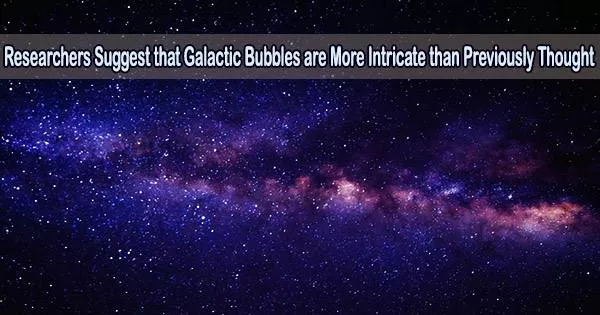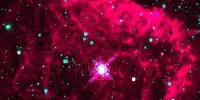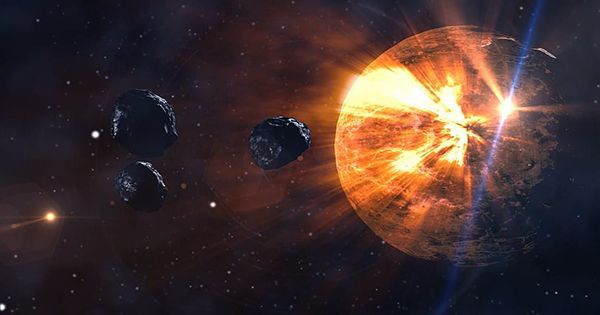New information regarding the characteristics of the enormous bubbles of high-energy gas that extend far above and below the Milky Way galaxy’s center has been disclosed by astronomers.
The Ohio State University-led team was able to demonstrate that the shells of these objects, known as “eRosita bubbles” since they were discovered by the eRosita X-ray telescope, are more complicated than previously believed in a paper that was just published in Nature Astronomy.
The shape of eRosita bubbles is very similar to that of Fermi bubbles, but they are bigger and more energetic.
Anjali Gupta, the study’s lead author and a former postdoctoral researcher at Ohio State who is currently a professor of astronomy at Columbus State Community College, said they offer an exciting opportunity to study star formation history and reveal new insights about how the Milky Way came to be. They are collectively known as the “galactic bubbles” due to their size and location.
These bubbles exist in the gas that surrounds galaxies, an area which is called the circumgalactic medium.
“Our goal was really to learn more about the circumgalactic medium, a place very important in understanding how our galaxy formed and evolved,” Gupta said. “A lot of the regions that we were studying happened to be in the region of the bubbles, so we wanted to see how different the bubbles are when compared to the regions which are away from the bubble.”
Scientists really do need to understand the formation of the bubble structure, so by using different techniques to better our models, we’ll be able to better constrain the temperature and the emission measures that we are looking for.
Anjali Gupta
The key results of this research imply that the temperature of the gas within the bubbles isn’t much different from the area outside of it. Previous studies had hypothesized that these bubbles were heated by the shock of gas as it pushes outward from the galaxy.
“We were surprised to find that the temperature of the bubble region and out of the bubble region were the same,” said Gupta.
The study also shows that these bubbles are not hotter than their surroundings, which would explain why they are so bright, but rather that they are filled with extraordinarily dense gas.
Gupta and Smita Mathur, co-author of the study and a professor of astronomy at Ohio State, did their analysis using observations made by the Suzaku satellite, a collaborative mission between NASA and the Japanese Aerospace Exploration Agency.
Researchers were able to characterize the diffuse emission the electromagnetic radiation from very low density gas of the galactic bubbles, as well as the other hot gases that surround them, by examining 230 archived observations made between 2005 and 2014.
Despite the fact that the cause of these bubbles has been disputed in scientific literature, this work is the first to make a start at resolving it, according to Mathur. The team’s findings strongly suggest that galactic bubbles were initially formed by nuclear star-forming activity, or the injection of energy by massive stars and other types of astrophysical phenomena, rather than through the activities of a supermassive black hole, as they discovered an abundance of non-solar neon-oxygen and magnesium-oxygen ratios in the shells.
“Our data supports the theory that these bubbles are most likely formed due to intense star formation activity at the galactic center, as opposed to black hole activity occurring at the galactic center,” Mathur said.
The team hopes to use new data from more upcoming space missions to continue describing the properties of these bubbles and work on unique ways to evaluate the data they already have in order to further study the ramifications their discovery may have for other areas of astronomy.
“Scientists really do need to understand the formation of the bubble structure, so by using different techniques to better our models, we’ll be able to better constrain the temperature and the emission measures that we are looking for,” said Gupta.
Other co-authors were Joshua Kingsbury and Sanskriti Das of Ohio State and Yair Krongold of the National Autonomous University of Mexico.
















